P80 (Gen 3) vs GLOCK (Gen 5) Slides: What's Different?
Posted by 80-Lower.com on Mar 27th 2023
We've covered the differences between the Polymer80 (Gen 3) frame, and the Gen 5 GLOCK frame. But what about the slides? Are their parts interchangeable? Can you fit a Gen 3 slide on a Gen 5 frame? Let's take a look.
Gen 3 vs Gen 5 GLOCK Slides Compared
For this comparison, we're looking at an LFA Elite Gen 3 slide in Flat Dark Earth, and an OEM, black GLOCK 19 MOS slide. Both feature optic cuts and threaded mounting holes for micro red dots.
Gen 3 vs Gen 5 Ejection Ports
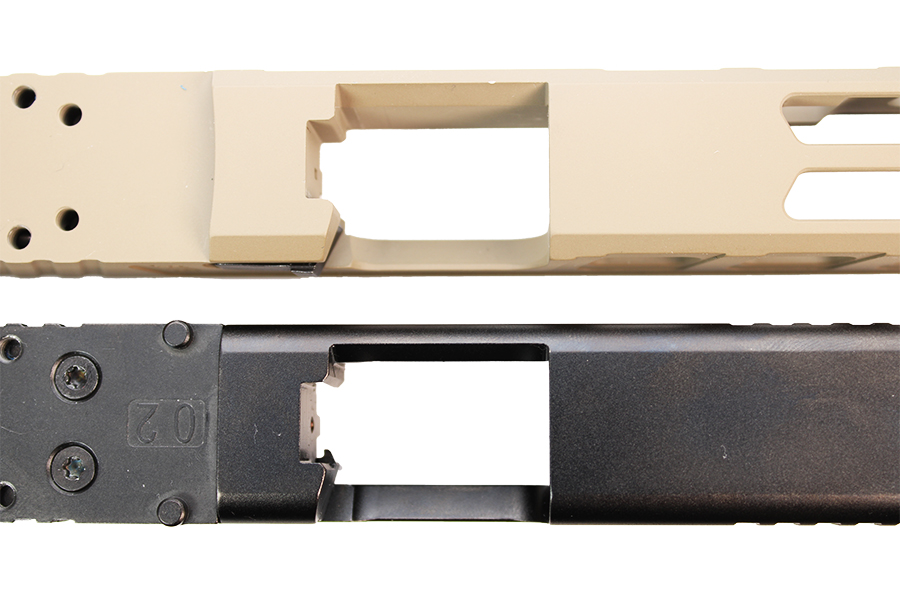
Starting on the top side, we can see the ejection ports and chamber cavity are identical on both slides. They're cut to the same width and length.
Gen 3 vs Gen 5 Breech Faces
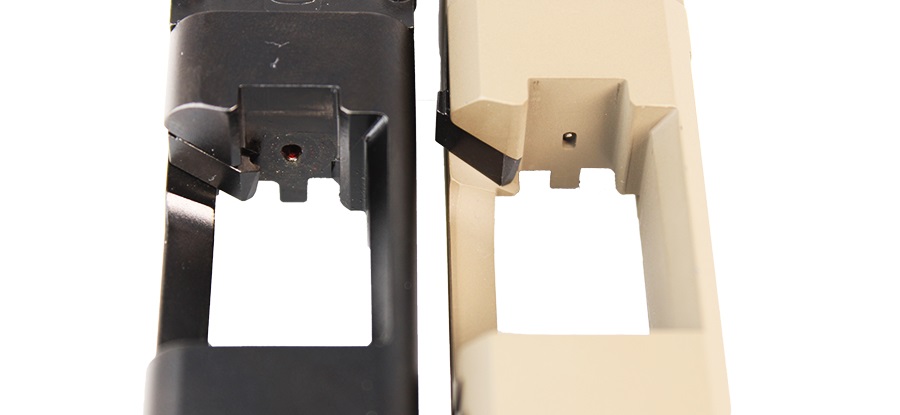
Both breech faces are cut identically, too. But if you look closely, you can see two important differences:
First, the extractor hook on the Gen 5 GLOCK (pictured left) seats further into the breech face area, and is more pronounced. The Gen 3 extractor hook (pictured right) sits relatively flush with the interior right side of the slide and breech face wall.
Second, the firing pin hole shapes are different:
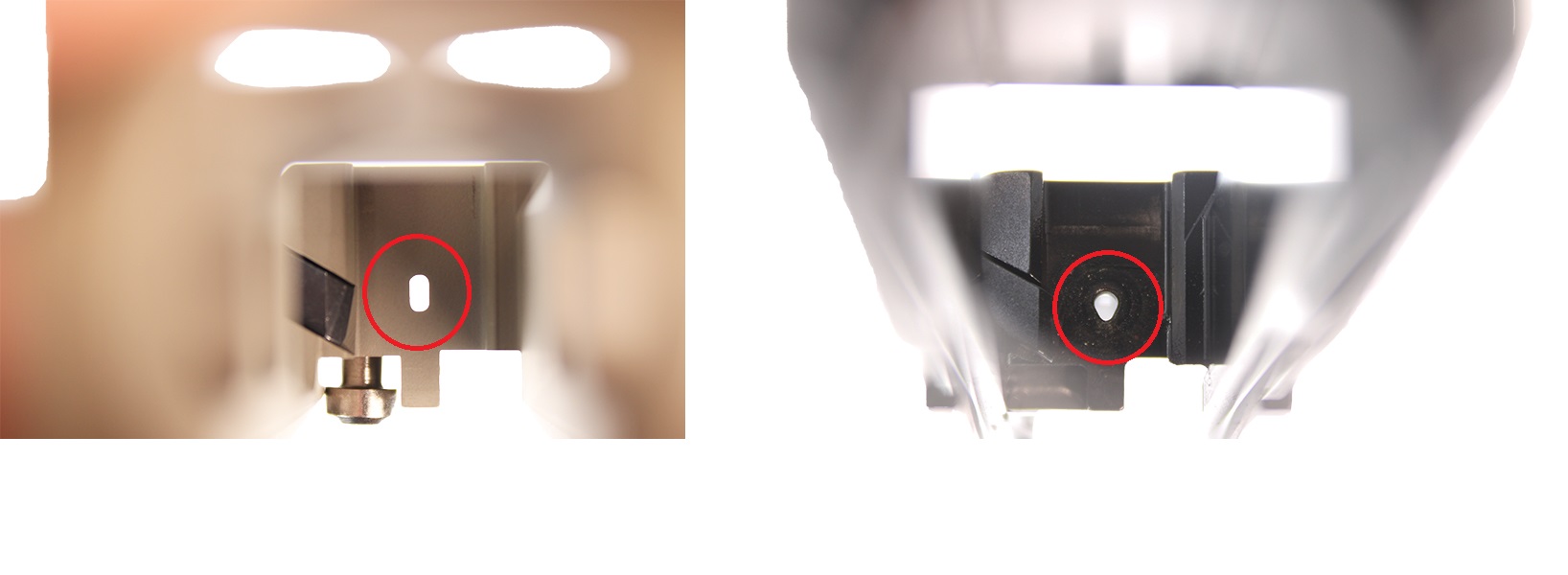
The Gen 3 slide (pictured left) have a firing pin hole shaped into a simple oval. The Gen 5 slide (pictured right) has a tear drop-shaped firing pin hole that's shorter and wider at the top, tapering into a rounded point at the bottom.
Gen 3 vs Gen 5 Firing Pin Assemblies
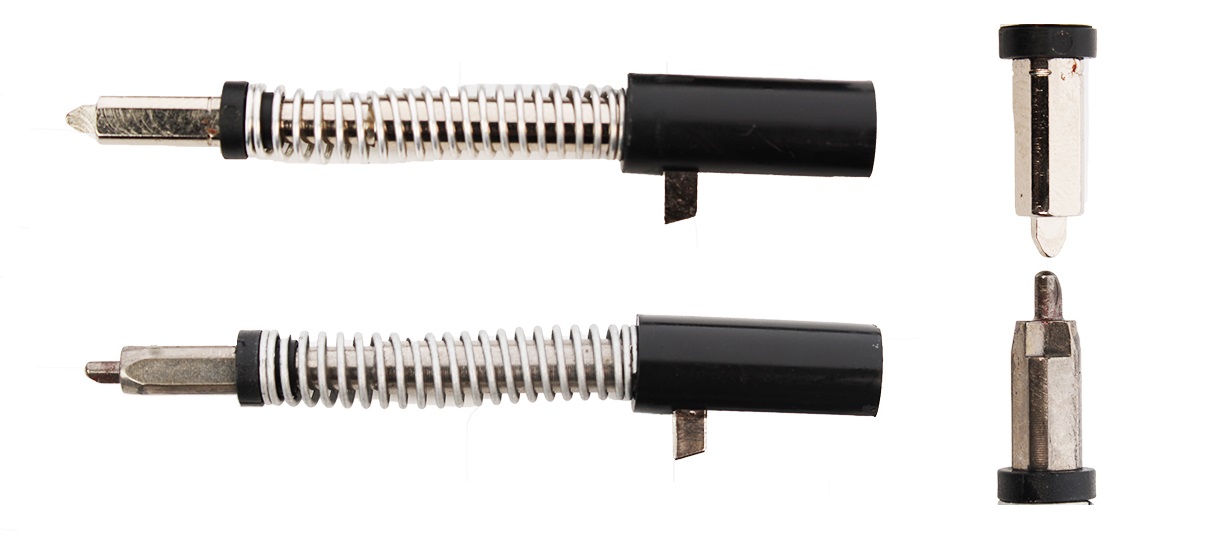
If you guessed these differently shaped firing pin holes were made to accommodate different firing pin heads, you were right: The Gen 3 firing pin (pictured top) has a nearly identical assembly compared to the Gen 5 unit (pictured bottom).
Both units measure the same, exact length, and they use the same striker post and spacer sleeve. They also use the same firing pin springs and spring cup retainers.
But the head of the Gen 5 pin features that tear drop-shaped point, while the Gen 3's pin head is oval.
Gen 3 vs Gen 5 Operating Rod Seats
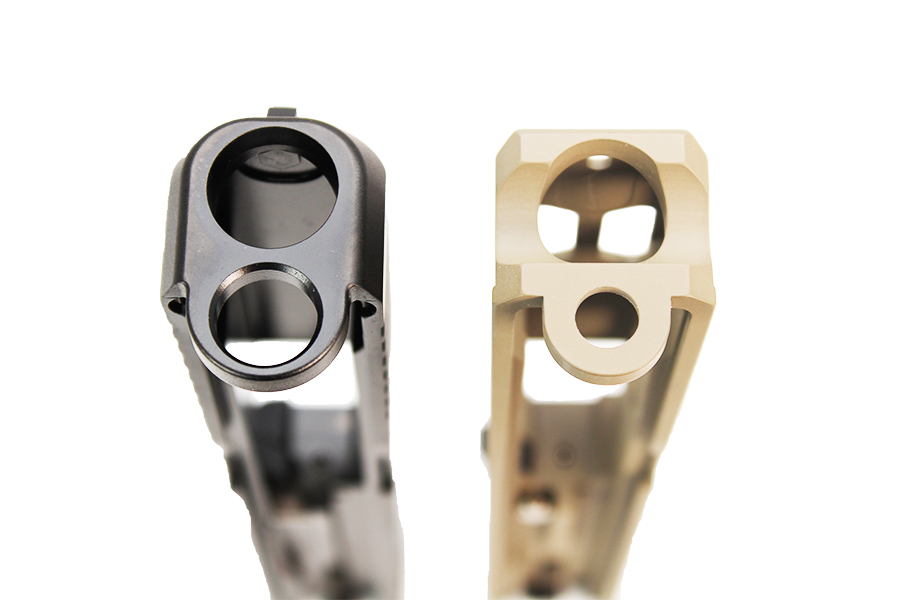
Sticking to the outside, we can see the Gen 5 slide (pictured left) has a much larger operating rod / recoil spring mounting hole, or "seat," compared to the Gen 3 slide (pictured right).
Gen 3 vs Gen 5 Operating Rods / Recoil Springs
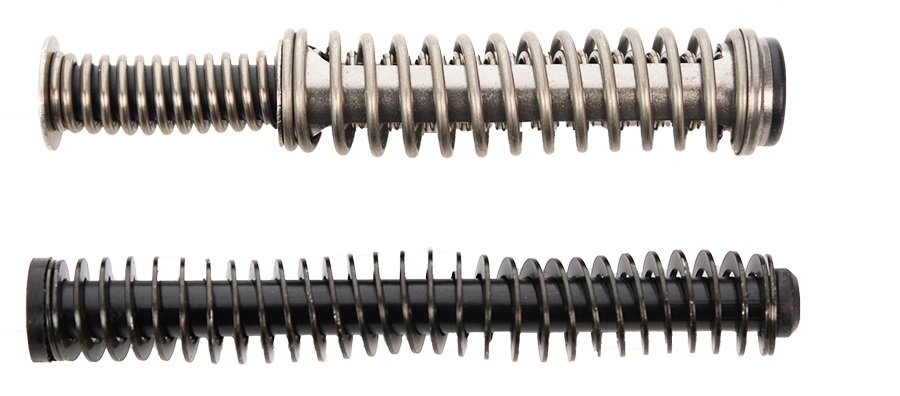
These differently sized op rod mounting holes accommodate different operating rods and recoil springs. The Gen 5 op rod (pictured top) is made from polymer and stamped steel, with a larger head and base. The Gen 3 op rod (pictured bottom) uses one, long recoil spring with a much smaller seat and base.
the Gen 5 slide's updated op rod and spring are said to help improve felt recoil mitigation.
Gen 3 vs Gen 5 Slide Bottoms
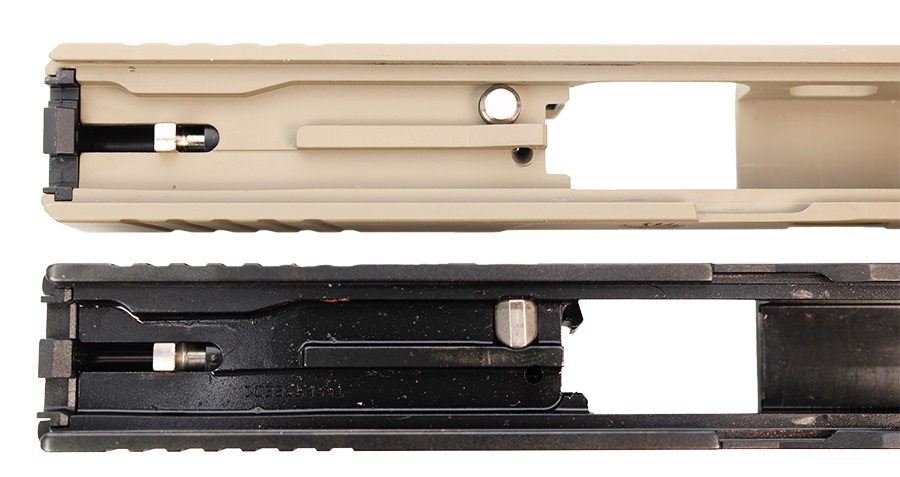
The bottoms of both slides are nearly identical, with just one difference: The Gen 5 slide (bottom) is cut with a larger firing pin safety hole to accommodate a larger firing pin safety. The Gen 3 slide (top) features a smaller, round hole for a physically smaller safety head.
Gen 3 vs Gen 5 Firing Pin Safeties
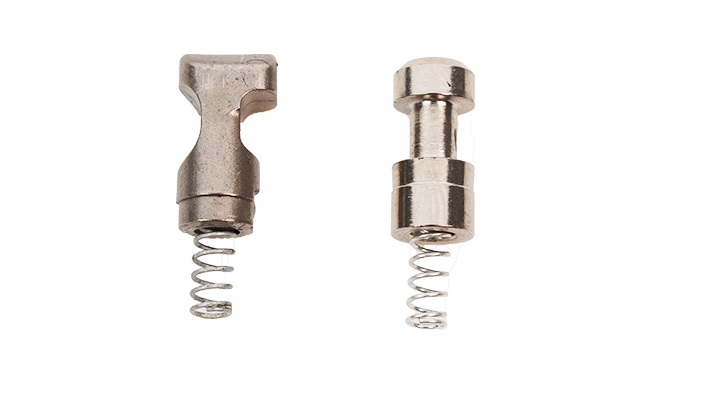
The Gen 5 firing pin safety (pictured left) sports a major redesign: Although it retains the same safety spring as the Gen 3 (pictured right), the safety mechanism has been reshaped. The cut-out for the firing pin is now rounded, and the head of the safety is rectangular.
Unlike the Gen 3's rounded, cylindrical assembly, the Gen 3 safety must be oriented in one particular direction to fit in the slide and its cut-out.
Gen 3 vs Gen 5 Extractors
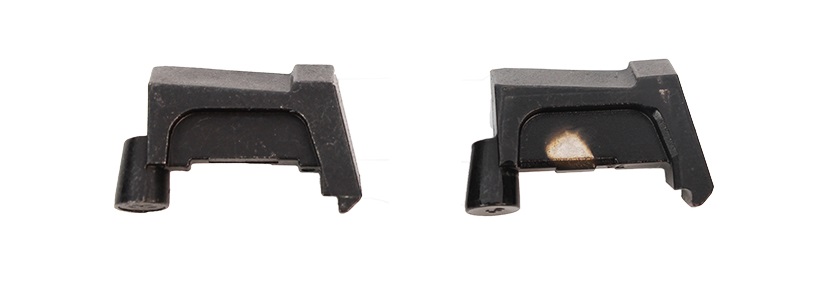
Although the shapes of the firing pin safeties are markedly different, both slides use the same extractor shapes. The only difference between the extractors is, again, the slightly larger hook on the Gen 5 extractor (pictured left). Besides the hook shape, the Gen 3 extractor (pictured right) is identical in form and function to its Gen 5 counterpart.
Gen 3 vs Gen 5 Extractor Plungers
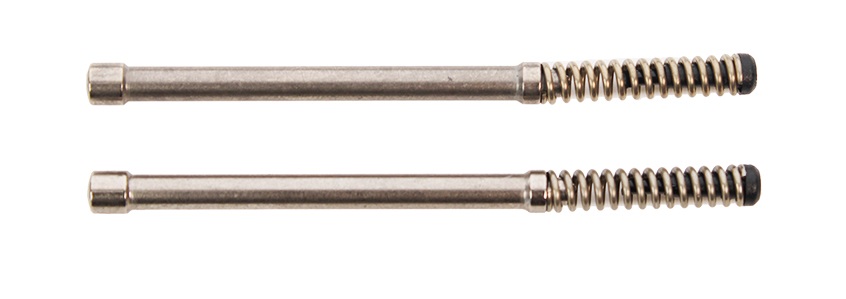
because the Gen 3 and Gen 5 extractors are identical, so too are their extractor plunger and spring assemblies. We cannot identify any physical changes to the design of the rods, springs, nor plungers when comparing both units shown above.
Gen 3 vs Gen 5 Firing Pin and Plunger Channels
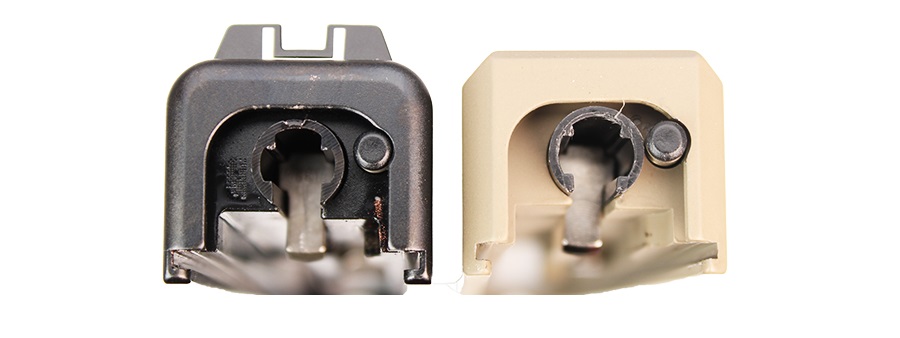
With cover plates removed, we can see both the Gen 3 and Gen 5 slides feature identical rear ends. Both the firing pin / channel liner and extractor plunger holes are identical in shape, location, and diameter.
Gen 3 vs Gen 5 Cover Plates
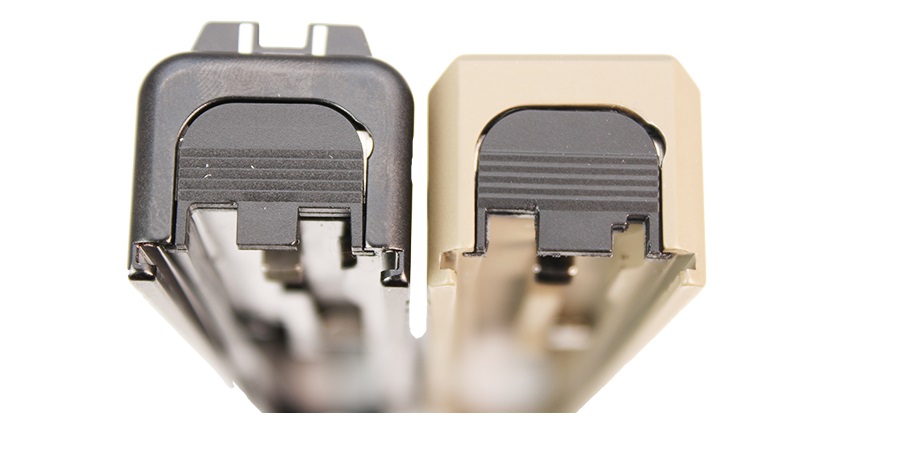
Both slides' cover plates are nearly identical, too: The Gen 3 plate (right) features a wider post at the bottom. The Gen 3 plate's bottom post (left) is cut thinner, with wider square openings to accommodate the frame's updated, larger trigger mechanism housing.
See the differences between Gen 3 and Gen 5 frame parts here.
Gen 3 vs Gen 5 Barrels
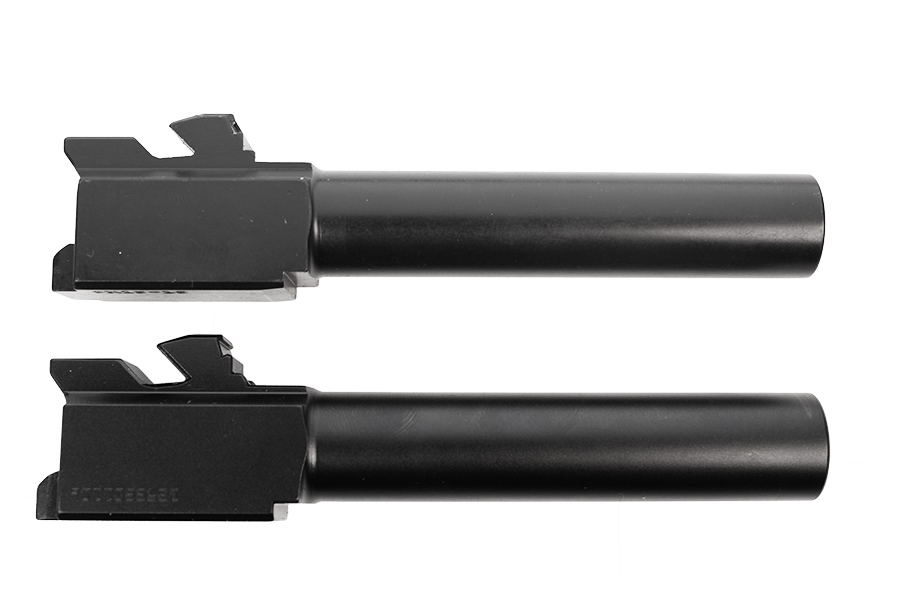
In the case of the GLOCK 19, Gen 3 and Gen 5 barrels are nearly identical when it comes to their length, chamber shape, and lugs.
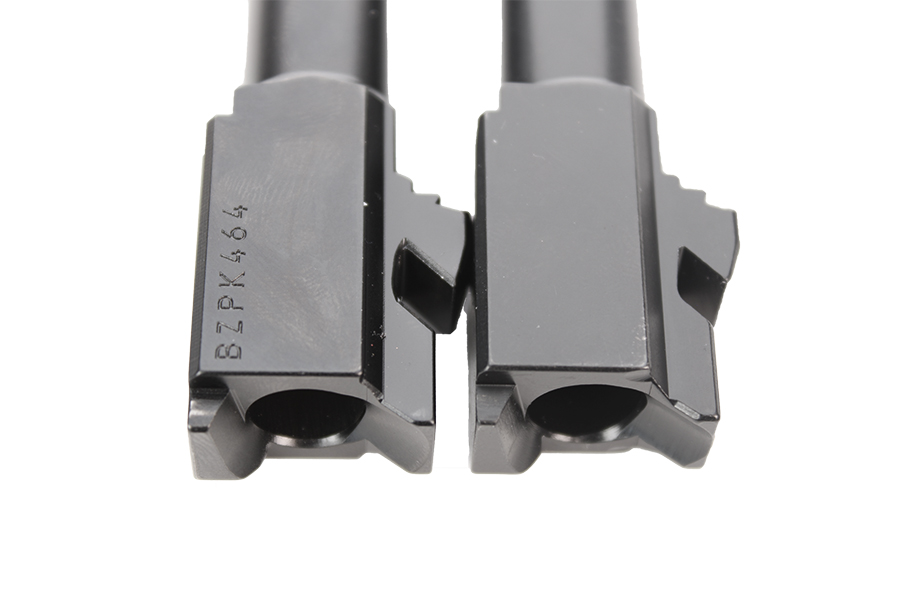
The height and angle of both barrels' lugs are identical, as are the shapes of the breeches and feed ramps.
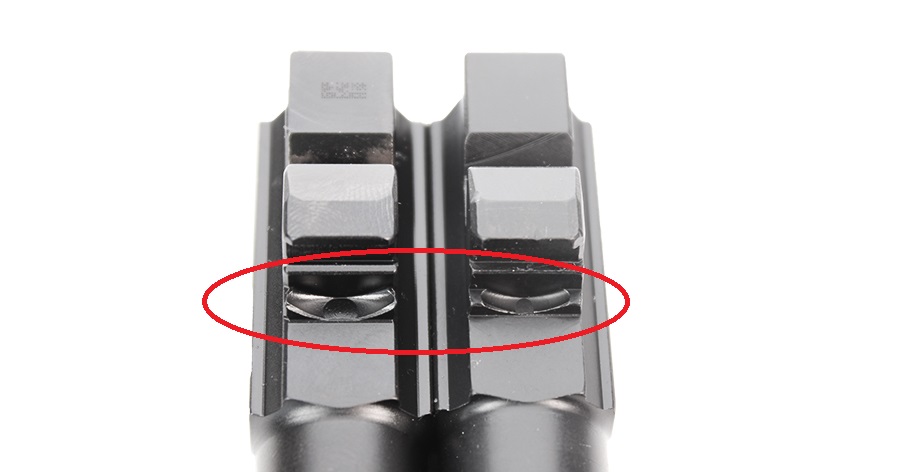
One subtle difference can be found in the operating rod lug seats: The Gen 5 barrel's op rod seat (pictured left) is cut wider to accommodate the Gen 5 rod's wider base.
Gen 3 vs Gen 5 Slide FAQ
Q: Will a Gen 3 slide fit on a Gen 5 GLOCK frame?
A: No. We tested this ourselves. Although the Gen 3 slide will fit over the Gen 5 frame's slide rails and locking block, there are clearance issues with the Gen 5 frame's other internal components that prevent the Gen 3 slide from fitting properly.
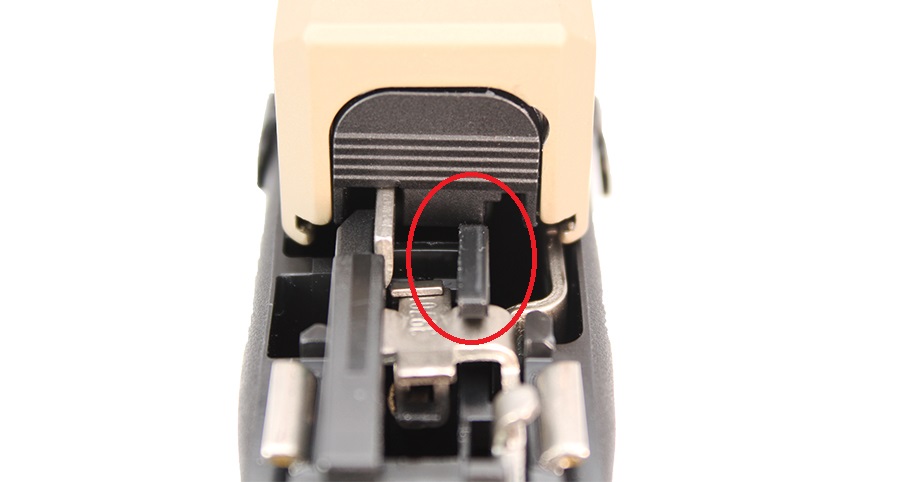
Pictured above, the Gen 3 slide's cover plate will not clear the top of the Gen 5 slide's trigger mechanism housing. Even with the Gen 5 cover plate installed on the Gen 3 slide, there are other clearance issues that prevent pairing these two assemblies.
Q: Will a Gen 5 recoil spring and operating rod fit a Gen 3 slide?
A: No. The larger head of the Gen 5 op rod and spring assembly does not fit inside the Gen 3 slide's op rod / recoil spring mounting hole.
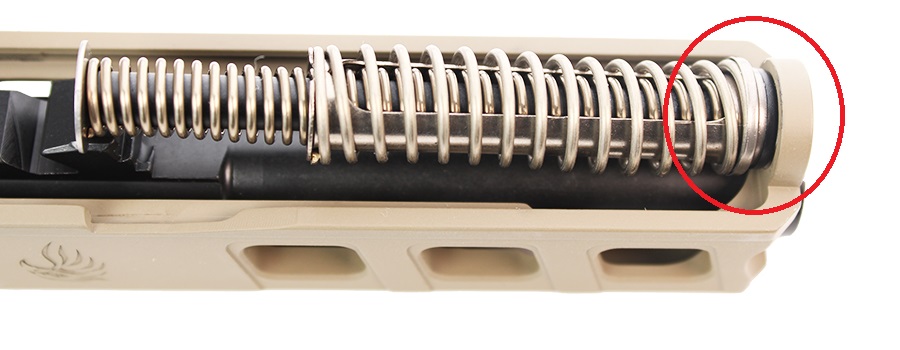
This lack of clearance prevents the guide rod from sliding through through the hole, which is necessary for allowing the recoil spring to compress and function properly.
Q: Are any Gen 3 and Gen 5 slide parts interchangeable?
A: With this parts review, we could determine that the following Gen 3 and Gen 5 parts are interchangeable:
- Firing Pin Springs
- Firing Pin Spring Cups
- Firing Pin Channel Liners
- Firing Pin Spacer Sleeves
- Firing Pin Safety Springs
- Extractor Plunger Assemblies
Q: Which Gen 3 and Gen 5 slide parts are not interchangeable?
A: The following components cannot be swapped between slide assemblies:
- Barrels
- Extractors
- Stripped Slides
- Recoil Springs
- Operating Rods
- Firing Pin Safeties
- Cover Plates
- Firing Pins
DISCLAIMER: If you are new to the world of DIY gun building, you likely have a lot of questions and rightfully so. It’s an area that has a lot of questions that, without the correct answers, could have some serious implications. At GunBuilders.com, we are by no means providing this content on our website to serve as legal advice or legal counsel. We encourage each and every builder to perform their own research around their respective State laws as well as educating themselves on the Federal laws. When performing your own research, please be sure that you are getting your information from a reliable source.

